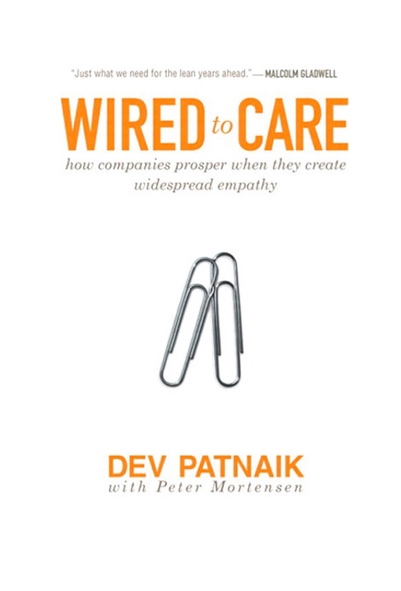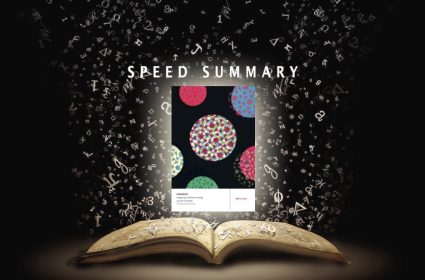Speed Summary: Wired to Care


- Wired to Care: How Companies Prosper When They Create Widespread Empathy
- Author: Dev Patnaik
- Publisher: Pearson
- Publication: 2009/2014
Human empathy will make you a better innovator. Step into the shoes of your consumer and innovate from their perspective is the not so secret innovation secret of companies such as Nike, Pixar, Netflix and IBM.
That’s the pitch in Wired to Care: How Companies Prosper When They Create Widespread Empathy by Stanford professor and TED speaker, Dev Patnaik.
Empathy is the ability to step outside of ourselves and into the shoes of someone else. It’s about experiencing what it feels like to be another (em = into, pathy = feeling).
It’s method acting for life.
And it’s what IBM does in ‘Operation Bear Hug’ when top executives regularly get up close and personal with top clients, to feel what it is like to be an IBM customer. It’s Pixar sending the producer of the Ratatouille movie to work under French Laundry chef, Thomas Keller, to feel what it is like to work in a kitchen. It’s what Netflix does, ensuring all employees are active users of its service, so they know what it feels like to be a Netflix customer. It’s what Nike and Harley Davidson do, ensuring that innovation teams include target consumers – athletes and riders – so they keep innovation real.
Beyond Innovation by Numbers
For Patnaik, one big problem with corporate innovation is that it is increasingly data-led rather than human-led. We’re too quick to reduce people to Excel cells, statistical segments or the eviscerated ciphers of Big Data. But when we do this, we lose the most important perspective that counts – the human perspective. We get out of touch with the people for whom we’re innovating. And we stop caring. And when we stop caring, sales suffer. To offset the dehumanizing influence of Big Data and the Quantified Corporation, we need an injection of humanity, and for Patnaik, this means becoming an empathic organization that is in touch with the people it serves.
The Golden Rule
Innovate for others, as you would innovate for yourself. This is the innovation equivalent of the ‘do unto others as you would have done to you’ ‘Golden Rule’ of life. And it’s the essence of empathic innovation. Not to be confused with customer intimacy – feeling close to your customers or customer sympathy – feeling something for your customers. Instead, empathy about stepping into the shoes of your customer, and innovating for yourself, from their perspective.
The fruits of empathic innovation – innovating for others as you would innovate for yourself – are detailed in Wired to Care by contrasting the fortunes of the Microsoft Xbox with the Microsoft Zune. The Xbox was created by an innovation team of gamers innovating for gamers to take on the PlayStation. The Zune, designed by a business team to take on the iPod, was built without this empathy; instead, it was built others and not for the innovation team. Xbox was a hit, Zune a failure. As Apple is wont to point out we create things we ourselves want to use. Lose that and you lose the essence of successful innovation.
Empathic Innovation
In a world where quantitative data rules, doing empathic innovation can be tough. But Patnaik offers three tips to create an innovation culture of widespread empathy
- Make it easy: Provide lightweight methods for people in your company to connect with the outside world. For example, Target executives at their HQ walk through and shop at a Target store at the HQ premises.
- Make it everyday: Surround your work environment with information about the lives of your customers. For example, Nike create a working environment that looks more like a training complex than the architecture of corporate monsterdom
- Make it experiential: Ditch the customer insight PowerPoint and go feel what other people are feeling. This was the logic behind IBM’“Operation Bear Hug,” program noted above.
The Brand Genetics Take
We’re fans of empathy as a rich source of insight for innovation, so there was an element of preaching to the converted with Wired to Care: How Companies Prosper When They Create Widespread Empathy. The idea that you need to become your customer before you can innovate for them is simple and powerful, as is innovating to the Golden Rule. Innovating for humans based on what unites us, rather than segments that divide us is also a compelling thought. And recent empathy research shows that in-group / out-group distinctions – i.e. innovating for a different segment to yourself – reduces empathy (along with obedience to authority, and strong ideology)
What we missed in Wired to Care were more practical empathy tools to use in innovation. For example, we like the E.M.P.A.T.H.Y interview tool of Dr. Helen Reiss, that boosts our empathy skills in research
- E: eye contact – use it
- M: muscles of facial expression – pay attention to expressions
- P: posture – interpret it
- A: affect – pay attention to expressed emotions, not just the words
- T: tone of voice – convey warmth and care
- H: hearing the whole person – taking their perspective, in their context
- Y: Your response – Make reflective not scripted comments and sense check – “so you’re feeling X, because Y?”
Despite the desire for more practical tools, Wired to Care is a useful contribution to businesses looking to humanize their innovation. Data-led, but human-inspired.




